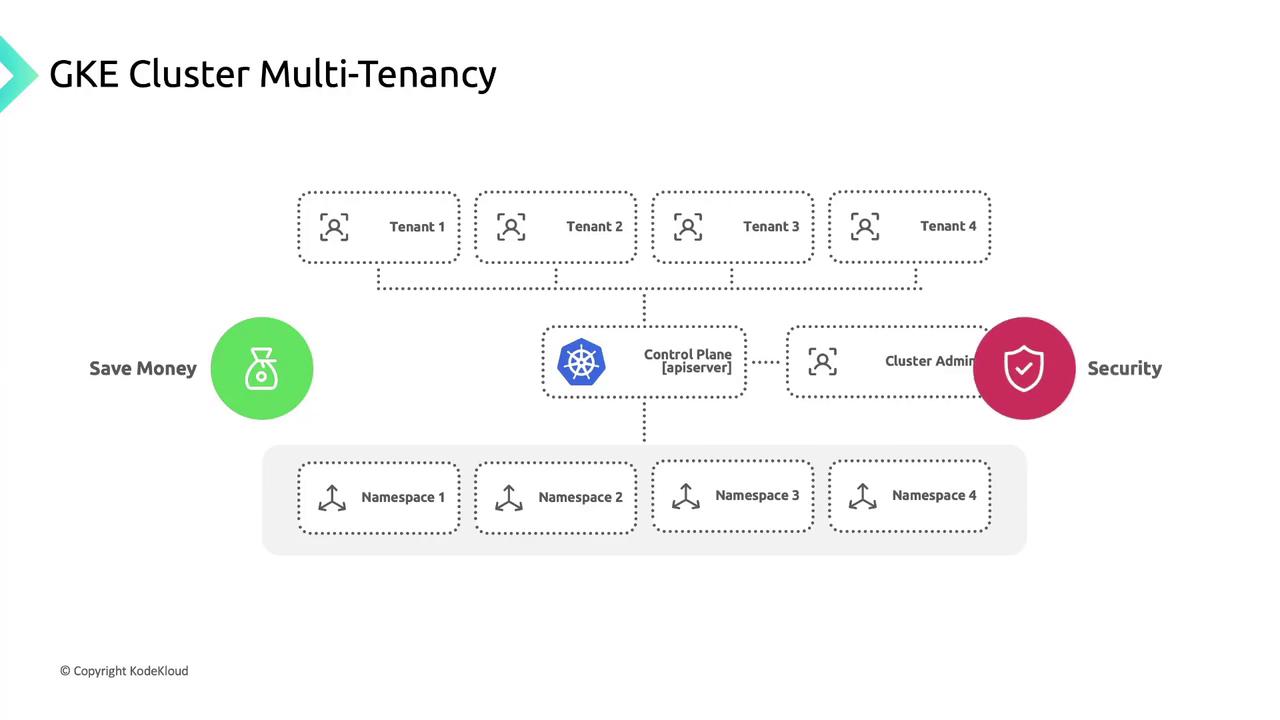GKE - Google Kubernetes Engine
GKE Design Considerations
Cluster Multi Tenancy
In this guide, you’ll learn how to host multiple tenants—users, teams, or workloads—on a single Google Kubernetes Engine (GKE) cluster. GKE Cluster Multi-Tenancy centralizes control-plane operations, security policies, and auditing while allowing each tenant to operate in isolation.
Why Choose a Multitenant Cluster?
- Cost Efficiency
Consolidate control-plane and compute resources to lower infrastructure costs. - Agility & Flexibility
Onboard or offboard tenants on demand without spinning up new clusters. - Simplified Management
Monitor and operate all tenants from one GKE console, streamlining DevOps workflows.
Warning
Before implementing multitenancy, evaluate your organization’s security posture and compliance requirements. Proper isolation is critical to safeguard tenant workloads and sensitive data.
Isolation Layers in Kubernetes
Consider these five layers to enforce tenant separation:
| Isolation Layer | Purpose | Key Tools & Features |
|---|---|---|
| Cluster Level | Single control plane for all tenants | GKE control-plane, central logging, cross-cluster policies |
| Node Level | Dedicated or shared node pools | Node taints & tolerations, custom node pools |
| Namespace Level | Logical resource partitioning | Namespaces, ResourceQuotas, LimitRanges, NetworkPolicies, RBAC |
| Pod Level | Per-pod security boundaries | Pod Security Admission, SecurityContexts, NetworkPolicies |
| Container Level | Hardened container runtime | Service accounts, vulnerability scanning, read-only root FS |

Namespaces for Tenant Isolation
Namespaces are your primary sandbox for tenant workloads:
- Apply
ResourceQuotaandLimitRangeto cap CPU, memory, and object counts. - Enforce
NetworkPolicyrules for traffic segmentation. - Use
RoleBindingandClusterRoleBindingfor fine-grained RBAC.
Note
Combine namespaces with dedicated node pools and strict Pod Security Admission profiles for stronger isolation.
Enterprise Best Practices
For large-scale, production-grade multitenancy, follow the enterprise best practices:
- Secure cluster provisioning with private clusters and VPC-native networking
- Policy enforcement via Anthos Config Management and Gatekeeper
- Centralized monitoring and audit logging
- Automated tenant onboarding and offboarding workflows

Links and References
- GKE Enterprise Multitenancy Best Practices
- Kubernetes Namespaces
- Anthos Config Management
- Pod Security Admission
Watch Video
Watch video content